Summary
Disaster Management is the organization and management of resources and responsibilities for dealing with all humanitarian aspects of emergencies, in particular preparedness, response and recovery in order to lessen the impact of disasters. It is broadly two types then divided in many types. For getting knowledge each and every disaster is most important as well as management aspect. Mitigation, Preparedness, Response and Recovery are the major aspect of disaster.
Keywords
Disaster, Veterinary, Mitigation, Preparedness, Response and Recovery
Introduction
A disaster is defined as serious interruption of the functioning of a community or a society involving wide range human, material, economic or environmental losses and impacts, which exceeds the ability of the affected community or society to cope using its own resources (ISDR, 2009). Humans are the most advance creature in the world. They are growing continuously day by day and increase your ability to survive in different condition of situation. But innocent animals find himself alone in adverse condition. No one can think about animals in any emergency conditions. In India there are many agencies are working for animal welfare, animal rights, treatments etc. In this including center Government, State Government, Non Government Organisations (NGO), private agencies and also socially activist. There are many reasons for a disaster in world as well as in India. In which two are major cause, one is epizootic and geophysical.
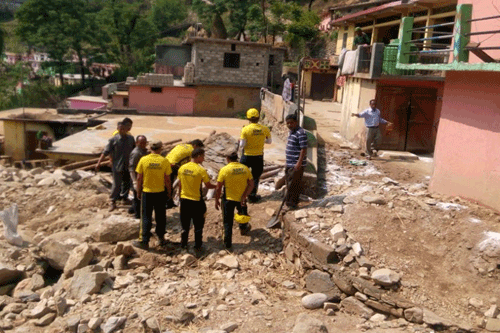
Types of disaster
The disasters are broadly divided into two types. One type is natural and second is technological. The natural disaster is further fall into five types, which in turn cover 12 disaster types and more than 30 sub types.
Natural Disaster:
1. Geophysical: This type of disaster occurring from solid earth
a) Earthquake
b) Volcano
c) Mass Movement (dry)- Rockfall, Landslide, Avalanche, Subsidence
2. Meteorological: It is caused by short-lived/small to meso-scale atmospheric processes
a) Storm- Tropical cyclone, Extra-tropical cyclone, Local storm
3. Hydrological: It is caused by deviations in the normal water cycle and/or overflow of bodies of water caused by wind set-up
a) Flood- General flood, Storm surge/coastal flood
b) Mass movement (wet)- Rockfall, Landslide, Avalanche, Subsidence
4. Climatological: It is occurring by long-lived/meso to macro-scale processes
a) Extreme temperature-Heat wave, Cold wave, Extreme winter condition Drought/wildfire- Forest fire, Land fire
5. Biological: It is due to the attack of living organisms to germs and toxic agent
a) Epidemic-Viral infectious disease, Bacterial infectious disease, Parasitic infectious disease, Fungal infectious disease, Prion infectious disease
b) Insect infestation
c) Animal stampede
(Source: UCL, “EM-DAT: The OFDA/CRED International Disaster Database,” UCL, http://www.emdat.be)
Technological
Chemical, Biological, Radiological, and Nuclear (CBRN) hazards rank very high in among the human-induced risks. Terrorist activities and secondary incidents add to these risks and call for adequate preparedness and planning.
Disaster control and management
To controlling the disaster is not a simple process, it is a systematic chain of applying better effort by administration, organisations and individuals. It is continuous process to reduce or control the before disaster, during disaster and after the disaster. Each and every step is crucial, important to control and management of disaster losses. Here we are discussing especially veterinary context.
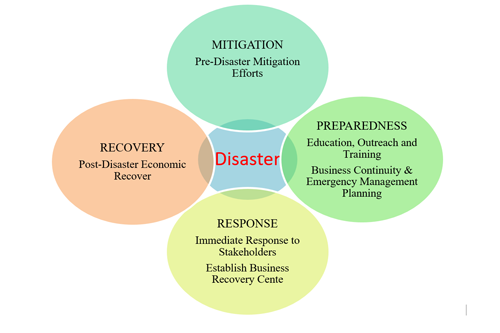
Veterinarians have been mainstream of animal health management throughout the world and the veterinary profession has been responsible for the control, treatment, and management of many diseases and also eradication of number of diseases from countries by development of vaccines, diseases surveillance and intervention programs (PAHO, 1982).
The role of the veterinarians in emergency management should be crystal clear and is no different from any other aspects of veterinary disaster management like proved the better care and treatment to animal for peoples. In case of disaster in developing countries, animal agriculture is an effective method to improve public health, environment and economy.
The Food and Agriculture Organisations (FAO) and OIE play an important role in disaster management by providing the guidelines, effective measures, fund, training, demonstration, exposure as well as learning by doing. These organisations provide a platform to Veterinarians doing well for animal and co-ordinate the needs for agriculture relief.
National Disaster Management Authority are issued some Guidelines.
| S.No | Theme | Title of NDMA Guideline | Year |
| 1 | Biological Disaster | National Disaster Management Guidelines– Management of Biological Disasters | 2008 |
| 2 | Chemical (Industrial) | National Disaster Management Guidelines – Chemical Disasters | 2007 |
| 3 | Chemical (Terrorism) | National Disaster Management Guidelines – Management of Chemical (Terrorism) Disasters | 2009 |
| 4 | Cyclones | National Disaster Management Guidelines – Management of Cyclones | 2008 |
| 5 | DM Plans for States | National Disaster Management Guidelines – Preparation of State Disaster Management Plans | 2007 |
| 6 | Drought | National Disaster Management Guidelines – Management of Drought | 2010 |
| 7 | Earthquakes | National Disaster Management Guidelines – Management of Earthquakes | 2007 |
| 8 | Fire Services – Scaling, Type of Equipment and Training | National Disaster Management Guidelines – Scaling, Type of Equipment and Training of Fire Services | 2012 |
| 9 | Flood | National Disaster Management Guidelines – Management of Floods | 2008 |
| 10 | Heat Wave | Guidelines for Preparation of Action Plan – Prevention and Management of Heat-Wave 2016 | 2016 |
| 11 | Hospital Safety | National Disaster Management Guidelines – Hospital Safety | 2016 |
| 12 | Incident Response System | National Disaster Management Guidelines – Incident Response System | 2010 |
| 13 | Information and Communication System | National Disaster Management Guidelines – National Disaster Management Information and Communication System | 2012 |
| 14 | Landslide and Snow Avalanches | National Disaster Management Guidelines – Management of Landslide and Snow Avalanches | 2009 |
| 15 | Medical Preparedness and Mass Casualty Management | National Disaster Management Guidelines – Medical Preparedness and Mass Casualty Management | 2007 |
| 16 | Minimum Standards for Relief | Guidelines on Minimum Standards of Relief | 2016 |
| 17 | Nuclear and Radiological Emergencies | National Disaster Management Guidelines – Nuclear and Radiological Emergencies | 2009 |
| 18
|
Psycho-Social Support | National Disaster Management Guidelines – Psycho-Social Support and Mental Health Services in Disasters | 2009 |
| 19 | School Safety Policy | National Disaster Management Guidelines – School Safety Policy | 2016 |
| 20 | Seismic Retrofitting of Deficient Buildings and Structures | National Disaster Management Guidelines – Seismic Retrofitting of Deficient Buildings and Structures | 2014 |
| 21 | Tsunamis | National Disaster Management Guidelines – Management of Tsunamis | 2010 |
| 22 | Urban Flooding | National Disaster Management Guidelines – Management of Urban Flooding 2010 | 2010 |
Mitigation
It is most effective tool or phase in any type of disaster in India and other countries by providing the strengthening the animal health services as well as strengthening the veterinary profession. A good veterinary service is that the all type of medicine, vaccines, diagnostic tool and most important specialist doctor in different field. The general approach to mitigation in India is to prevent the entry of trans-boundary diseases. India has suffered an erosion of their Veterinary Services due to economic point of view. Veterinary Services have become weakened as the animal health services budget is reallocated away from disease control programs and applied to salaries to maintain the number of people employed in the services (Heath et al., 1999).
Education play a major role for the supporting the veterinarians to focus of mitigation against the introduction of trans-boundary diseases. Latest knowledge, technique and visit to different state, countries should be provided to Veterinarians. Disaster management courses include in education.
Prearrangement/Readiness
This is essential part of any action in context to disaster. It is a team work not a individual responsibility. International agency FAO operates two programs. One is Global Information and Early Warning System (GIEWS) and second is Emergency Prevention System (EMPRES). First one is mainly for food and agriculture, next one is for animal transportation, plants, pest and diseases. Preparation should include involving local vets and animal health officials in prophylactic vaccination, deworming and husbandry programs.
In developing countries like India is far away to follow FAO regulation but now a day’s Government analyse this condition and providing adequate fund to state government for ready such kind of emergencies. Many state of India working in early alarming system. Many states are in critical stage occurring disaster.
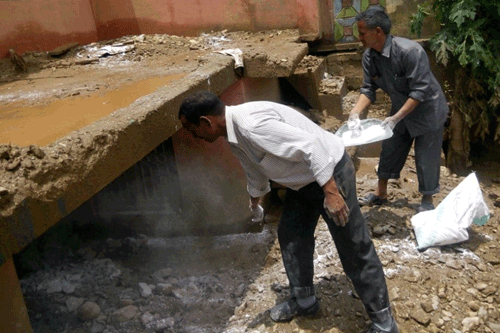
We should prepared for any type of disaster and arrange a necessary
For Your Pets: Have a kennel for each animal. If your home is destroyed, you’ll need some kind of shelter for your pet. Store a 30 day supply of food, water, and first aid supplies for your pets outside your home. Prearrange with a neighbor to come and check on your animals and take care of them should disaster strike. Prepare to find a lost pet by identifying each pet in your house. Comb out their fur/hair and place that fur/hair inside a clean, dry envelope. Seal it up and write the animals name on it. Attach a photo, Have your animal micro chipped or tattooed. Store this information in your car.
For You: Store a 30-day supply of food, camping supplies, shelter, first aid kit, flashlight, change of clothing, cold weather gear, sleeping bags, and cooking supplies outside your house in a small shed or rubber garbage container. If you live in an apartment, store everything in a large rubber garbage container outside on your deck, or in the closet closest to your door. In your car, store a 5-day supply of food, water, change of clothing, sleeping bag, toilet paper, first aid kit, flashlight, heavy boots, leather gloves, safety glasses, and a battery-powered AM/FM radio. In your work space, store a 3-day supply of food, water, flashlight, plastic bag, and toilet paper.
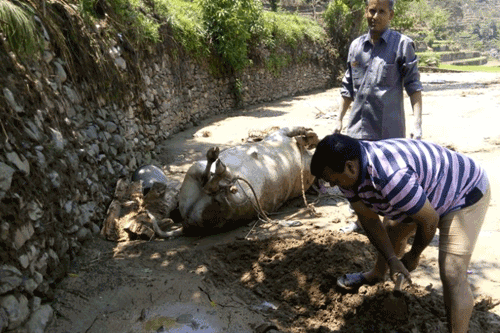
Responding
The primary or main aims of disaster response are rescue from immediate danger and stabilization of the physical and emotional condition of survivors like human as well as animals and restoration essential services like water supply, electricity, telephone connectivity etc. Disaster management plan geared towards this stage should include:- Reducing the possibility of further damage or injuries, Accelerating recovery activities Assisting emergency services and Returning systems to ordinary levels.
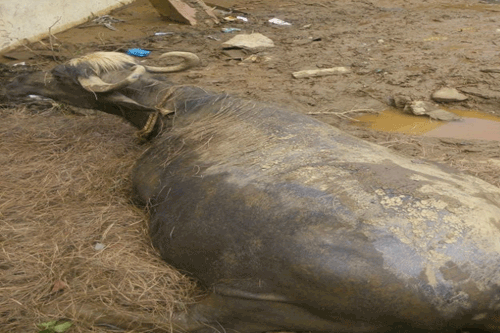
Recovering
Recovery is 4th phase of the disaster and it is referred as that schedule which goes beyond the delivery of immediate relief to assist those who have suffered more disaster to rebuild their homes, lives, animals and services. After disaster, life-saving management is the greatest amount of need. The swift delivery of food, water, shelter and medical care is vital to arrest further loss of life. Its whole programs can be broken into two periods like Short-term phase and long-term phase. The short-term phase includes 6 months to 1 years time duration for restoring the essential services and long-term phase ranges more than 1 years duration, requires thoughtful strategic planning and action to address more serious or permanent impacts of a disaster. Long-term recovery includes restoring economic activity and rebuilding community facilities and housing.
What can Veterinarians do?
Veterinary professionals participate in two major roles in emergency management. Firstly, they can offer traditional rescue and emergency services after disasters. They can join with humanitarian relief efforts and follow up with recovery programs. Like as control dog populations. Secondly, they can get involved in the mitigation and preparedness phases. Veterinarians with their knowledge of the epidemiology of endemic and post disaster diseases, animal health and husbandry, nutrition and behavior, vets, more than any other professionals, can make a vast contribution to improving the quality of life for both animals and their owners. Offering traditional services is a reactive process, but it is a valuable and humane addition to relief efforts. Here some photographic representation of Veterinarians in disaster managements.
Conclusions
The evolving sphere of disaster management is offering the veterinary profession an opportunity to take a leading role not only in animal welfare but in humanitarian efforts as well. As vets, we are in a position to understand the issues surrounding disease epidemiology, nutritional and behavioral aspects of animal management, as well as husbandry methods for increasing productivity and viability.
References
- International Strategy for Disaster Reduction (ISDR) (2009). 2009 UNISDR terminology on disaster risk reduction. United Nations International Strategy for Disaster Reduction (UNISDR), United Nations. 39pp.
- Pan American Health Organization (PAHO) (1982). Emergency vector control after natural disasters. PAHO, Washington, DC, 107pp.
- Heath, S.E., Kenyon, S.J. and Sein, C.A.Z. (1999). Emergency management of disasters involving livestock in developing countries. Rev.sci. tech. Off. Int. Epiz. 18(1): 256-271.
- UCL, “EM-DAT: The OFDA/CRED International Disaster Database,” UCL, http://www.emdat.be
- Source: http://ndma.gov.in/en/ndma-guidelines.html (as on 30 April 2016)


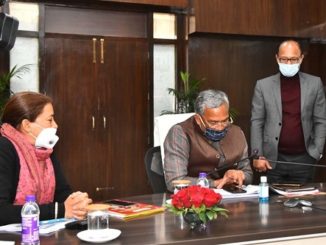
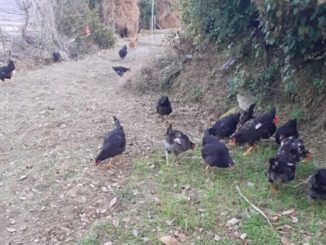
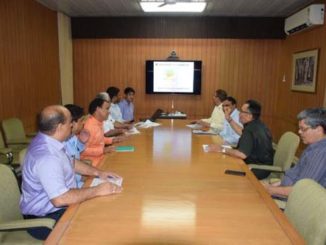

1 Trackback / Pingback